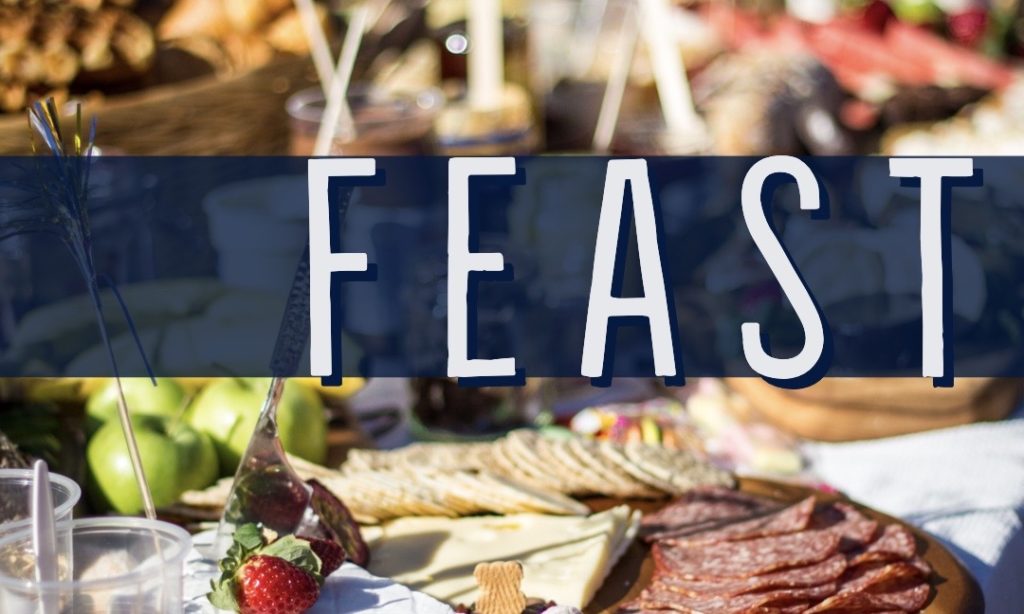
The Sensory Experience of a Feast
As Catholics, we are often playfully criticized for the all of the “bells and smells” of our faith. While the customs of our faith may seem ordinary to many cradle Catholics, imagine bringing a friend (who is not familiar with the Catholic faith) to Mass for the first time. What would she experience? What would she notice and inquire about? It is likely that most first-time-Mass-goers would initially be more curious about the physical expression of our faith than the spiritual reality. Why is this? Perhaps our expression of faith proclaims an obvious truth that we sometimes forget: humans are embodied. The “bells and smells” of Mass, the beauty of our sanctuary, the postures of kneeling and standing, the congregational singing, the spoken creeds, the candles and incense, the gurgling Baptismal font, and the taste of bread and wine— these sensory experiences are all intended to engage and unite our body and spirit in the Eucharistic feast. After all, what is a feast if it is not a sensory experience?
Temporary Changes
In order to reduce potential germ exposure during this unique time, our church has made a variety of temporary changes. While no single change constitutes a material departure from typical practice, the total sum of small changes makes Mass “feel” very different from how it has in the past. Consider the dry baptismal font, no longer gurgling with “rivers of living water” (Jn. 7:38). Consider our break from congregational singing and sharing the sign of peace. With masked faces, separated pews, and silenced voices, we might not “feel” as fully engaged in Mass as we once had. While you may experience a certain degree of loss with these temporary changes, the absence of these practices helps us better understand why do them in the first place!
Hedonism vs. Spiritualism
Our modern culture tends to err in two extremes at once, often not realizing that it conflicts with itself in an “either-or” approach body and spirit. In the error of hedonism, we are told that satisfying our body and seeking pleasures is the goal. Materialism, greed, and consumerism are some of the marks of our hedonistic culture. Our society answers the flaws of hedonism with spiritualism — the belief that our spiritual or interior self is all that matters and our body (and what we do with it) is periphery. Gender confusion and the widespread use of contraception are some of the marks of spiritualism. But, our Catholic faith affirms a “both-and” approach to the body vs. spirit debate. Our personhood is not hedonistic or spiritualistic, but incarnational — body and spirit. Created in the image and likeness of God, human beings are a unity of body and spirit.
Our Faith and “Feelings”
The full expression of our Catholic faith fits our full personhood. Our faith is embodied as we are embodied; our savior is incarnate as we are incarnate. Our Catholic faith, liturgy, churches, sacraments, and sacramentals seek to express and speak to this reality. Our bells, smells, prayer postures, and songs are spiritual and physical practices, meant to fully engage full people, meant to be felt. The pinnacle expression of our embodied faith is in the Eucharist, in which Jesus gives His incarnate self — body, blood, soul, and divinity — to us in the articles of bread and wine. Physically our mouths taste and our bodies receive the love that our spirits long for. During this unique time, it is true that Mass “feels” different. We are blessed to be part of a faith tradition that honors and engages our personhood, even with some practices temporarily scaled back. While these changes may be difficult to accept, the pinnacle of our embodied faith remains unchanging, and He awaits us at every Mass in the Blessed Sacrament.



